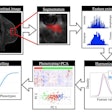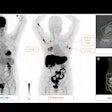MONTREAL - As in the rest of the world, breast cancer is the most common cause of cancer among Canadian women, and the second leading cause of cancer deaths. More than 21,200 new cases are expected in 2004.
But unlike the rest of the world, Canada has comprehensive breast cancer screening programs in each of its provinces and territories save for Nunavut. Could this enormous national screening and follow-up effort, begun in 1992, be part of the reason death rates are starting to fall?
Dr. Nancy Wadden, professor of radiology at Memorial University of Newfoundland and one of Canada’s leading breast screening advocates, certainly hopes so. In a presentation Friday at the International Congress of Radiology, she discussed a study that found better outcomes among women screened in such programs compared with those screened for other reasons.
Early detection equals life
"The death rate is decreasing," Wadden said. "In 2003 the death rate was estimated to be about 5,300, in 2004 it’s 5,200 (-3.6% since 2000), and I remember delivering a lecture in the late ‘90s where I talk about 5,700. So that is tremendous news, and we need to take credit for some of it."
Not all of the numbers are encouraging: The incidence of breast cancer is up 9.9% since 2000, she said. But the lower death rate, combined with the latest five-year outcomes data, compiled through 2002, would certainly seem to favor regular screening programs. Five-year breast cancer survival in Canada for stages 0, 1, 2A, 2B, 3A, 3, and 4 are 100%, 98%, 88%, 76%, 56%, 49%, and 16%, respectively, Wadden reported.
"Once we get to stages 3, 4, and 5, we’re not looking at the best news possible," she said. "It’s these early stages that screening is helping; the later stages our new chemotherapies are helping, and our new surgeries, but we really need to emphasize the screening to get as many women in Canada who have breast cancer into stages 0 and 1, and possibly 2A."
The trend was clear enough even back in 1985, when the Reston, VA-based American College of Radiology published data showing that five, 10, and 20-year breast cancer survival was about 90%, 70%, and 60%, respectively, for breast cancer patients with negative nodes, compared to about 50%, 45%, and 35% for women with positive nodes, she said.
"We also know that for stage 1 disease -- tumor that is less than 2 cm in size with negative lymph nodes -- that it is the size of the tumor that is most important," Wadden said. "Even grade 3 aggressive tumors will have the same survival as the lower-grade (1) tumors if we can find them at stage 1. That is our goal."
Programmatic screening
Canada has both programmatic and non-programmatic screening. In a non-programmatic setting the onus is on the patient, the healthcare facility, or family physician to arrange for screening and follow-up. In contrast, programmatic screening provides for systematic screening of the entire target population (women ages 50-69 with no history of breast cancer) and includes comprehensive quality assurance and continuous monitoring of the program itself, as well as care and assistance for the women participating in it. The goal is to get as many women as possible into screening "so we can effect a change to move the time of diagnosis back as early as we possibly can," she said.
Health Canada’s 2000-2001 health survey data showed that in 9 out of 14 of Canada’s provinces and territories, more than 60% of eligible women had a screening mammogram, either in a screening program or outside of one. Participation dipped to the 40%-50% range in some regions such as the Northwest Territories, Yukon, and even Newfoundland, with overall participation at about 66% of the eligible population. Participation, even in remote areas, has improved in the intervening years, she said.
During the same time period, close to 70% of screening mammograms were performed without the quality-assurance benefits of a comprehensive screening program, she said, but that figure, too, is expected to improve significantly when the 2003-2004 numbers become available.
"Remember that when we … find abnormalities there’s a lot of them that don’t turn out to be anything -- there are a lot of adverse effects," Wadden said. "What are those adverse effects? The anxiety that’s induced in women who have false-negative results."
Thus, it is the quality assurance of a comprehensive screening program that "tips the fulcrum" towards a screening benefit and moves the time of diagnosis backwards, she said.
The programs begin with recruitment and recall services. "In my particular province we have a group of people whose job it is to make sure that the women are recalled -- they’ll almost show up at the women’s door if the women decide they’re not going to come back," she said.
Quality control and assurance are also integral to the programs. Follow-up includes staff spending time to lead patients gently down the path to diagnosis, and at the same time there is continuous evaluation of the data and comparison with cancer registries.
The Canadian Breast Screening Initiative was started in 1992 as a partnership between Health Canada, the provincial territorial screening programs and governments, as well as professional organizations, non-governmental agencies, and women. It has done a tremendous job of helping the entire country come together in terms of breast screening, Wadden said.
"It’s also given us a tremendous voice to be able to go to government, to lobby to government, but also to the individual provinces …for additional resources," she said. In addition, the national screening initiative database, established in 1993, "has been a tremendous benefit," she said. "It has given us an international voice. We can now compare our statistics with the rest of the world and we’re doing really, really well."
Program goals
How well? The Canadian Standard of Core Indicators and targets for the evaluation of performance and quality of organized breast screening programs was developed in 2000 to answer that question. It is based on peer-reviewed literature, international standards, and program practices, and allows each province to compare itself with the rest of the country, and the country to the rest of the world. It enables the development of sufficient screening and follow-up capacity within each province.
The working goal is 70% participation in the comprehensive screening program, though 100% is always the real goal, she said. Another program goal is that 75% of women who have a mammogram return for follow-up in one or two years depending on risk factors. The abnormal callback goal is < 10% on the initial screens, and < 5% on the follow-up screens, "and we’re almost there," she said. The aim is to find a happy medium between callback rates as low as 2% in Europe and 20% in the U.S.
"If your call rate is too low, your cancer detection rate is going to go down, the interval cancer rate is going to go up," she said.
Another goal close to being achieved is to find more than five invasive cancers per 1,000 screens and more than three per 1,000 on rescreens, with the data compared and refined continuously based on regional epidemiological data. The goal for the diagnostic interval is no later than five weeks after the exam. The positive predictive value goal is 5% on the initial screen (compared to actual data of 5.5%), and 6% on rescreens (compared to actual data of 6.7%). There should be two benign lesions for every one malignant open-biopsied lesion, according to current goals, but the current results trump it at 1.3:1, she said.
"Every woman who is a candidate for core biopsy should have one prior to any open biopsy," she said. Another goal is for at least a quarter of invasive tumors to be smaller than 10 mm, because 38% of all cancers are smaller than 1 cm, and these are the women who have terrific 20-year survival rates," she said. Still, some cancers grow so fast that it will never be possible to find them all small between screenings. The aim is for fewer than 20% of screenings resulting in positive lymph nodes; the current rate is 24.3%, Wadden said.
Happily ever after
All well and good, but do comprehensive breast screening programs improve outcomes? A recent study shows that they do. In 1999, Wadden and colleagues began a study in Newfoundland that compared TMN breast cancer staging in women ages 50-74 who participated in a comprehensive breast cancer screening program compared with those who did not. One urban area (St. Johns) and one rural, (Gander) participated in the study.
From March 1999 and June 2002, 311 women who had never participated in the breast screening program were diagnosed and staged. In 1999/2000, 20.4% of women of Newfoundland and Labrador participated in the program; 56% of women reported having had a screening mammogram with or without the benefit of a program. Two hundred fifty-six cancers were diagnosed among the women in both groups.
For women diagnosed in screening programs, the distribution at stages 0, 1, 2, 3, and 4 was 15.6%, 51.5%, 26.2%, 4.3%, and 2.3%, respectively. For women diagnosed outside of screening programs, distribution at the same cancer stages was 6.1%, 34.7%, 45%, 9.6%, and 4.5%, respectively.
"The results are quite startling," Wadden said. "You can see that 51.5% of women who were having screening had their cancers diagnosed at stage 1, as opposed to women who were outside of the screening program; 45% of those women were stage 2.
Moreover, 67% of women in the screening programs had their cancers diagnosed at stages 0 or 1, compared to only 40.8% of women who were not in screening programs. The inverse was true for cancers found at stages 2 though 4: 32.8% of these patients were in screening programs compared to 59.1% outside of such programs.
The average ages were fairly closely matched between the groups: 59.6 years for participants versus 61.3 years for nonparticipants, and yet there was no correlation between age and stage of disease at diagnosis.
"Some of this may be due to participant bias -- women who take care of themselves go to screening programs" -- but the groups were definitely age-matched and evaluated in their own regions, she said.
Wadden and colleagues concluded that women participating in a breast cancer screening program had a statistically significant lower stage of disease at the time of diagnosis than women who had never participated.
"What this has done is allowed us to go to the government and say, ‘you’ve got to do something; this is a tremendous burden on our healthcare system as well as a burden for the women of the province.’"
By Eric Barnes
AuntMinnie.com staff writer
June 26, 2004
Copyright © 2004 AuntMinnie.com



















